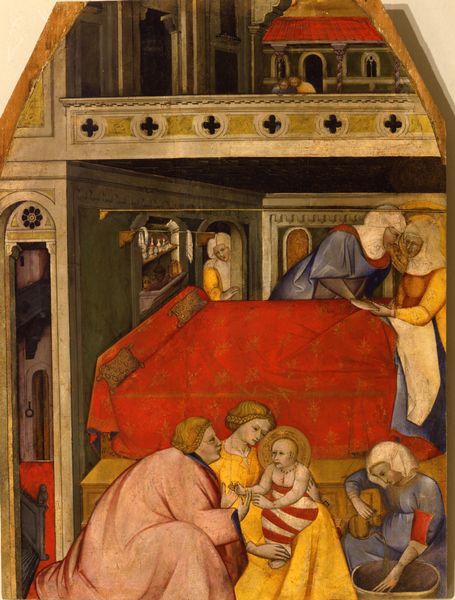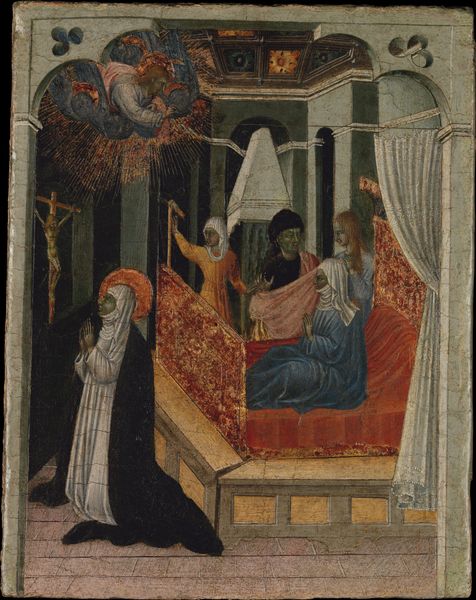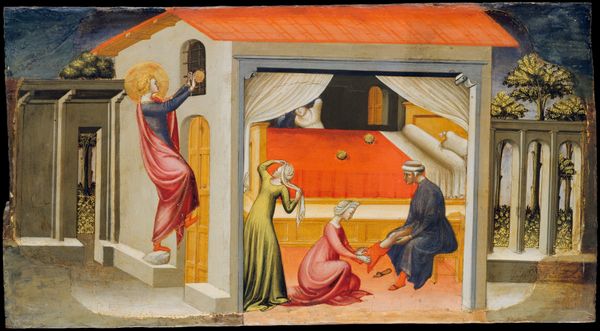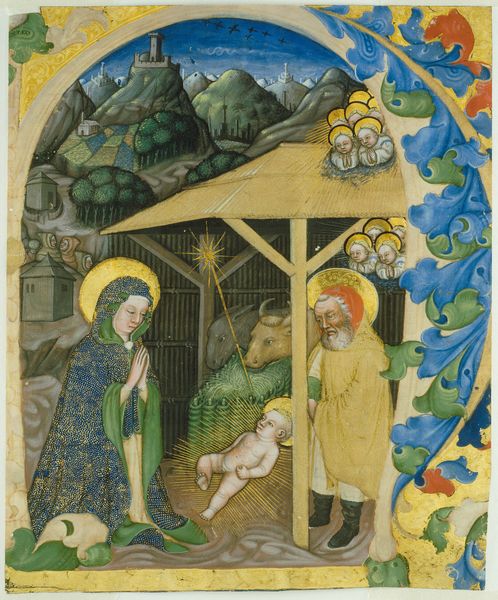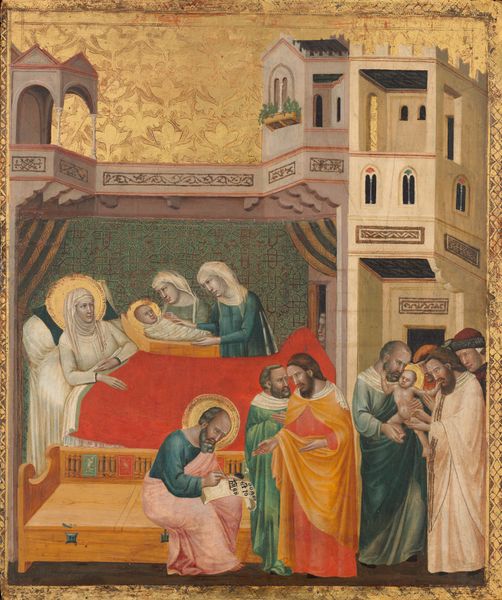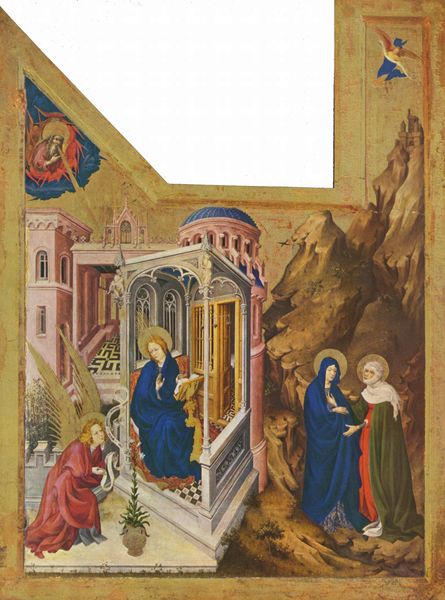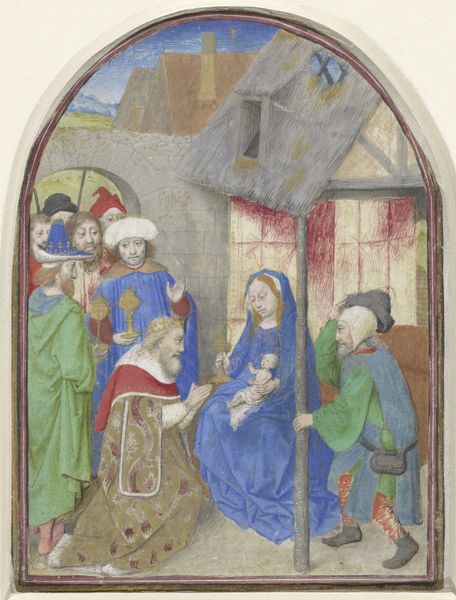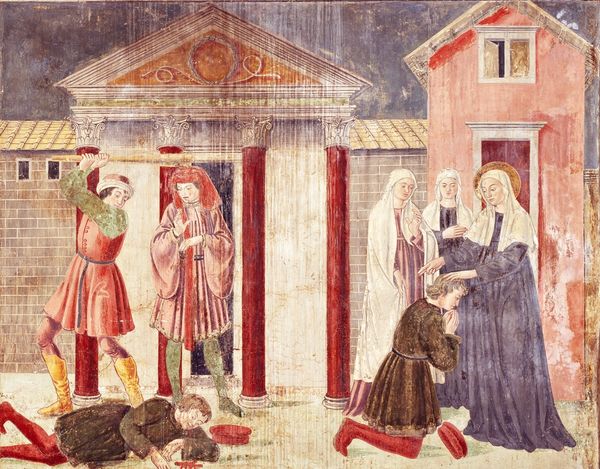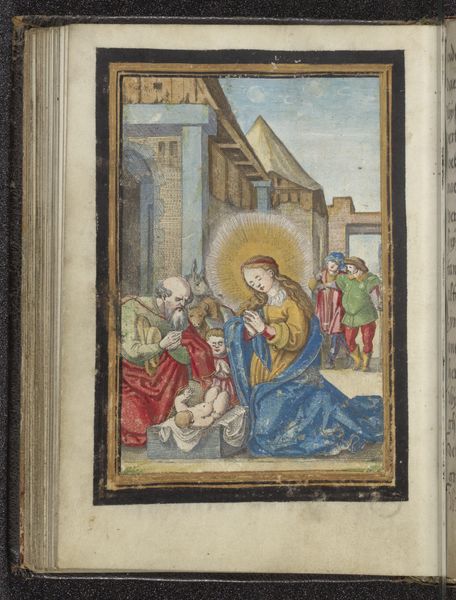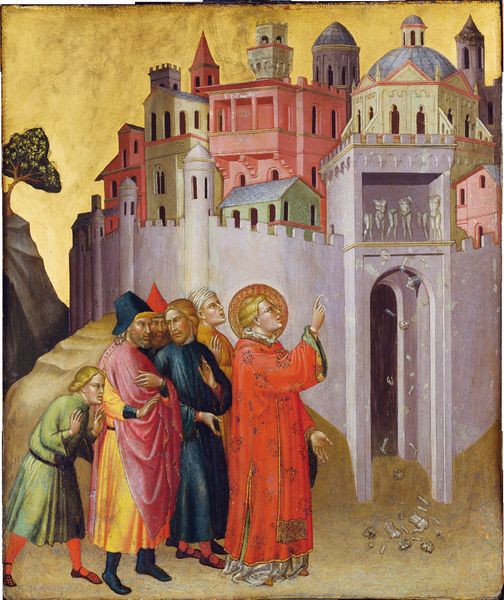
tempera, painting
#
woman
#
medieval
#
narrative-art
#
tempera
#
painting
#
figuration
#
child
#
genre-painting
#
international-gothic
#
miniature
Dimensions: 74.3 x 58.8 x min. 1.6 cm
Copyright: Public Domain
Curator: Looking at this striking panel, the atmosphere feels almost dreamlike, though laced with foreboding. It's a scene contained and surreal, somehow. Editor: Indeed. We're looking at "Exchange and Abduction", a tempera painting attributed to Martino di Bartolomeo, dating back to around 1390. The Städel Museum is fortunate to have this little gem. Curator: What immediately jumps out to me is the demon carrying a child away in the upper left. There’s a direct confrontation with the supernatural here that complicates any simple reading. The composition and flat perspective create a sense of unease, hinting at patriarchal anxiety and fear of the other. Editor: From a socio-historical standpoint, depictions like these served multiple roles. On the surface, religious morality tales often warned against sin and the ever-present threat of evil but underneath these visuals held sway in the minds of viewers and how people navigated the world during that time. The very inclusion of demonic figures kidnapping children highlights societal fears surrounding childbirth, infant mortality, and potential societal disruption from such a high mortality. Curator: The stark contrast between the warm, vibrant tones in the foreground, with the couple and their attendants, and the cool, grey architectural space above suggests a divided world, split between the earthly and something far more sinister, almost liminal. There's a clear visual distinction representing distinct domains, where malevolent forces operate almost unnoticed within the domestic sphere. It speaks to a constant threat of invasion and disruption. Editor: Note, too, how this painting operates within the "International Gothic" style. The attention to fine details, delicate drapery, and idealized figures all are part of the style; how power, religion and wealth shaped visual culture. Who was meant to view it and in what settings? Private chapels or noble houses perhaps. It speaks to elite viewership as well as the type of narratives that were perpetuated among these circles. Curator: Absolutely, the craftsmanship is undeniably beautiful but through our contemporary lens, that beauty belies deep-seated societal concerns. We are looking at something that reinforces traditional structures while hinting at subversive anxieties beneath the surface. Editor: Yes, seeing beyond initial aesthetics is key. This painting offers more than a pretty face, doesn't it? Curator: Certainly! A complex piece for reflection.
Comments
Join the conversation
Join millions of artists and users on Artera today and experience the ultimate creative platform.
